
Copic Tutorial: Airbrush System
By Colleen Schaan
The Copic Airbrush System (ABS) is a portable, lightweight and virtually mess-free way to add color to any creative art project. Just add Copic Original or Sketch markers!
ABS Basics
Whether you plan to spray a little or spray a lot, Copic has an Airbrush System that's right for you. There are three basic ABS Kits:
Copic ABS-1
This kit is perfect for those who plan to use airbrushing less often or for smaller projects. It comes complete with everything needed to airbrush right out of the package.
Kit includes: Air Grip, Air Adaptor, Air Can 180, Air Hose and Air Can Holder (Photo 1).
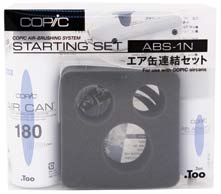
Copic ABS-2
This is a great trial kit. With just two components, it's a super-simple way to give the Copic Airbrush System a try.
Kit includes: Air Grip and Air Can D60 (Photo 2).
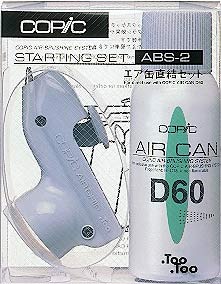
Copic ABS-3
This kit is for the serious sprayer! This one is meant to be used with either the larger 180 Air Can, or more popularly, a craft/hobby air compressor.
Kit includes: Air Grip and Air Adaptor. Please note that this kit requires an air hose to connect either to an air can or compressor (Photo 3).
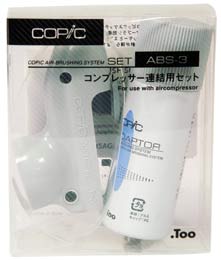
Copic ABS Assembly & Use
Setup is a snap:
Just screw the pieces together (Photo 4).
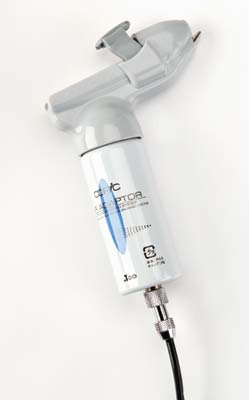
Insert either a Copic Original or Sketch marker (Photo 5).
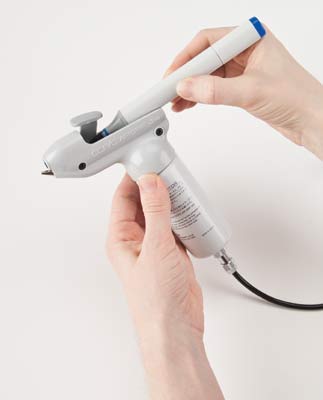
Press the trigger (Photo 6).

It couldn't be easier.
Various Spray Patterns & Techniques
Whether you want thin and dark, wide and light, smooth or speckled ... get all the looks from one system. With practice, you can learn to achieve these various effects from your Copic Airbrush System. Here are some techniques to practice:
Close Vs. Far
Practice spraying at a variety of distances form the surface. AS you move farther away from the surface, you will want to slow down your movement to make sure the area gets full coverage (Photo 7).

Hold the Air grip about 1/2 inch from the surface and spray quickly. The result is a dark, thin line.
Hold the Air Grip 2-3 inches from the surface and spray. This will result in a line that is a bit wider and slightly lighter.
Hold the Air Grip 4-6 inches from the surface and spray. Notice the wide, dispersed spray area resulting from this.
Brush Vs. Chisel
Each nib on the Copic Sketch marker will result in a different spray pattern. While the chisel nib is more commonly used, the brush nib is neat for special effects (Photo 8).
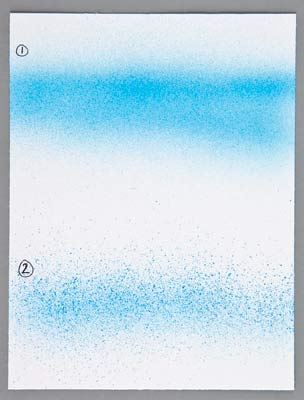
With the chisel tip insert, hold the Air Grip about 2 inches from the surface and spray. Notice the smooth coverage resulting from this.
With the brush tip loaded, hold the Air Grip about 2 inches from the surface and spray. Notice the resulting speckled appearance of the spray pattern.
Feathering
Similar to the "flick" used when coloring with the markers, you can create a dark-to-light spray pattern with the Airbrush (Photo 9). This technique can also be used to feather two colors together (Photo 10).

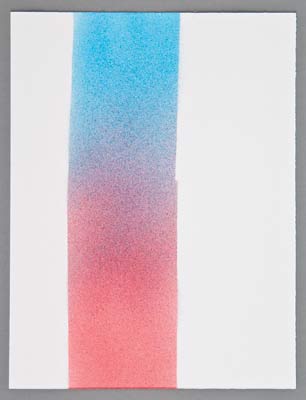
Holding the Air Grip 1-2 inches from the surface, begin spraying. As you continue to spray, move across the surface while at the same time lifting the Airbrush away from the surface. This results in a dark-to-light spray pattern.
To feather a second color into the first, rotate your surface 180 degrees and follow the same procedure with a second color, slightly overlapping in the center.
Stencils or Masks
Create intricate patterns by airbrushing over a stencil or create stunning backgrounds for your images through masking.
Place stencil or mask onto surface. Use repositionable adhesive if necessary.
Airbrush over the mask or stencil using a steady, back-and-forth motion (Photo 11).
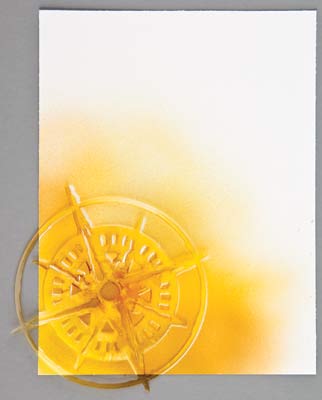
Remove mask or stencil to reveal airbrushed patterns or backgrounds (Photo 12).
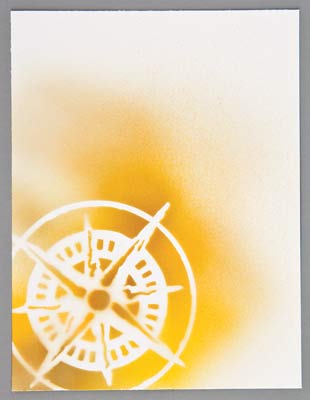
Tips & Tricks
- The trigger is pressure sensitive and will create different effects according to the pressure used.
- Airbrushing uses LESS ink than direct coloring since saturating the paper isn't necessary.
- Lighter colors may not show up on some surfaces.
- Airbrush on ANY surface. Create embellishments to coordinate with any project.
- Clean stencils and masks with alcohol swabs.
- For more information on the Copic Airbrush System, please visit www.copicmarker.com.
This Copic tutorial was first published in the September 2011 issue of CardMaker magazine. To get more information on Copic marker techniques:
- Purchase a copy of Colleen's book Copic Coloring Guide.
- Check out Colleen's blog, www.distinctivetouches.com.
- Subscribe to CardMaker magazine, where Colleen has a regular column featuring Copic marker techniques.


